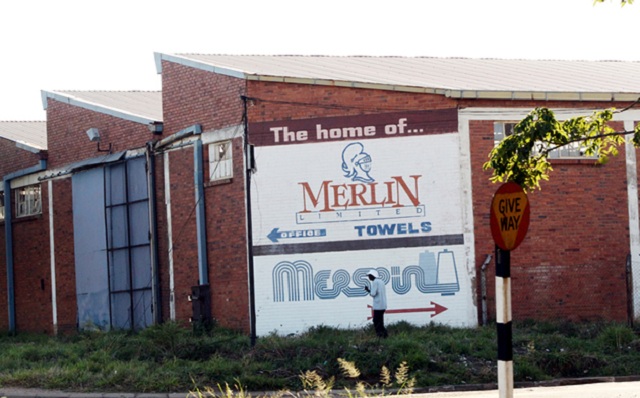THE judicial manager of troubled Bulawayo-based textiles firm, Merlin (Pvt) Limited, will this week present a report to creditors in which he is proposing the conversion of debt into equity.
The move is expected to allow the company to re-open with minimum capital and trade itself out of the woods.
A report by the judicial manager, Cecil Madondo, of Tudor House Consultants, proposes that the creditors of the firm — which needs a capital injection of $30 million to return to full operation — convert their debts into equity until such a time that the company is able to pay them off.
Madondo is proposing that should the scheme of arrangement be approved by creditors, the company should reopen by January next year.
"We are of the view that the scheme of arrangement is the best way forward for the company as it will give the company a fresh start with the creditors, members and investors participating in the turnaround," said the report.
"Some creditors will be offered either redeemable preference shares or ordinary shares depending on the preference of the creditor and the role they will then play in the recapitalisation of the business."
Madondo revealed that one of the creditors had offered to make available $350 000 that the company needs as working capital to resume operations.
"The immediate injection of working capital is expected to generate income to meet short term obligations and produce samples for marketing the products. The resultant effect of a gradual increase in revenue due to capacity building will start at around 30 percent and shall increase to about 50-60 percent over a six months to one year period, while efforts to bring institutional investors are in progress," the report said. The $30 million that the company requires is broken into the $2,1 million for minor repairs, maintenance and acquisition of raw materials and $4,5 million needed for major repairs and working capital. In the long term, the company would need to invest $22,5 million on replacement of obsolete plant and machinery.
The report said the revival of Merlin was possible because there was still a huge market for its products both locally and abroad.
"This is also evidenced by the high number of orders and support letters that we received from our market intelligence which shows that there is insatiable appetite for Merlin products from the local markets and also potentially from the regional and international markets."
The judicial manager highlighted that the long-term solution to Merlin's problems depended on securing an institutional investor.
Madondo recommended that in the unlikely event that the creditors did not approve the scheme of arrangement, the firm would have to be liquidated.
Merlin went into judicial management in December 2011, the second time inside a decade, due to alleged mismanagement. It was first placed under judicial management in 2002.
Businessman Delma Lupepe took over the firm in 2004 through Maydeep Investments. It was shut down due to lack of raw materials and mounting debts.
Madondo has in the past said Merlin collapsed due to "tragic failure of leadership", revealing that upon taking over the business, Maydeep did not follow the plan he had recommended earlier as provided for in terms of section 314 of the Companies Act.
Under the plan, Maydeep was required to capitalise the business in the short, medium and long-term through a five-year model that would have culminated in the replacement of obsolete machinery and equipment with new modern technology.
"This negatively affected the company's success…. The company was run down, with machinery not being serviced or repaired, resulting in the company halting operations towards the end of 2010," he said.
- fingaz
 Concern over Masvingo black market
Concern over Masvingo black market  Kenya declares three days of mourning for Mugabe
Kenya declares three days of mourning for Mugabe  UK's Boris Johnson quits over Brexit stretegy
UK's Boris Johnson quits over Brexit stretegy  SecZim licences VFEX
SecZim licences VFEX  Zimbabwe abandons debt relief initiative
Zimbabwe abandons debt relief initiative  European Investment Bank warms up to Zimbabwe
European Investment Bank warms up to Zimbabwe  Young Investment Professional (YIP) Graduate Programme 2019
Young Investment Professional (YIP) Graduate Programme 2019 











 Young Investment Professional (YIP) Graduate Programme 2019
Young Investment Professional (YIP) Graduate Programme 2019
Editor's Pick